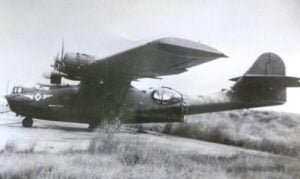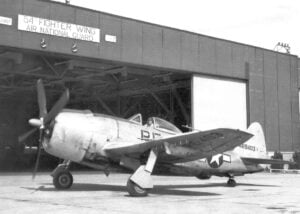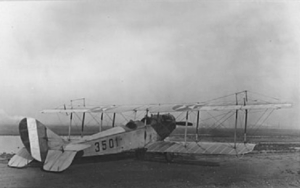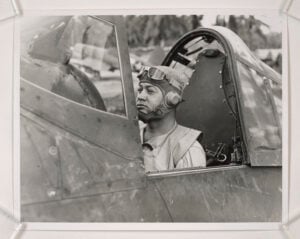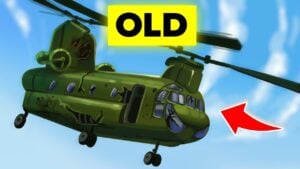Why the Fi 156 Is the Best Plane of Its Kind
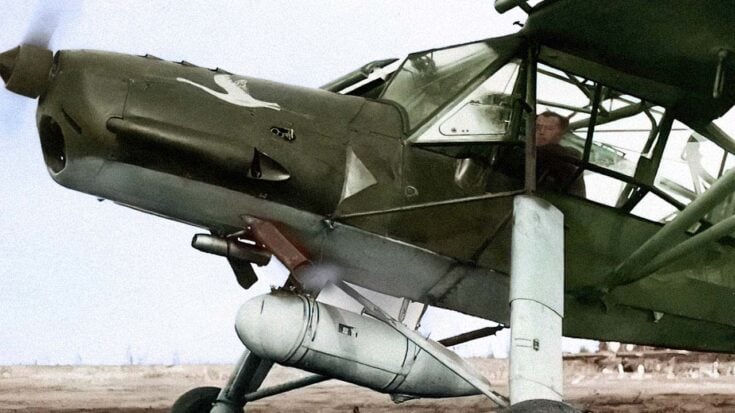
YouTube / Dark Skies
When German ace and aircraft designer Gerhard Fieseler created the Fieseler Fi 156 Storch, he was answering a simple Luftwaffe request for a light reconnaissance plane. But what he built became far more than a scout—it became one of the most remarkable short takeoff and landing (STOL) aircraft in history.
The Storch was light, slow, and barely armed, yet it played a crucial role in every major German campaign of World War II. It was flown by Erwin Rommel, Hermann Göring, and even Winston Churchill himself after the Allies captured several. For its time, nothing else could take off and land in such tight spaces, on such rough terrain, or under such dangerous conditions.
Designed by a Fighter Ace
Gerhard Fieseler was not just a designer—he was a fighter ace from World War I with 22 aerial victories to his name. After the war, he became a stunt pilot and engineer, combining both talents to build an aircraft that could maneuver precisely, take punishment, and remain reliable in combat zones.
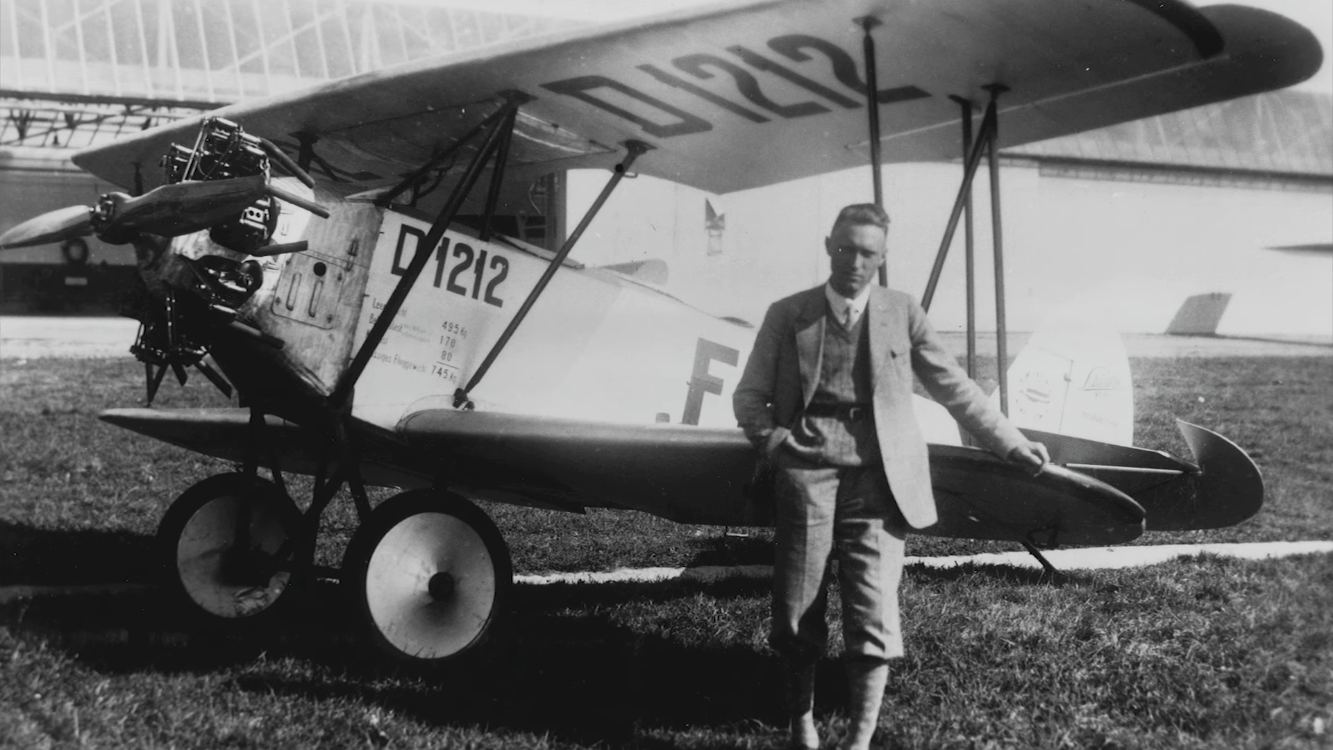
When the Luftwaffe in 1935 asked for a multipurpose liaison and observation aircraft capable of operating from unprepared fields, Fieseler saw his chance. Competing against designs from Messerschmitt and Siebel, his Fi 156 stood out for its simplicity, strength, and unparalleled STOL ability. It could lift off in less than 200 feet and land in even less—features that would make it indispensable in war.
Engineering a Flying Marvel
The Storch’s secret lay in its design. Its steel-tube frame was covered in linen and canvas, keeping it light yet durable. High-mounted wings with leading-edge slats and wide flaps gave it remarkable lift at low speeds, while the long, springy landing gear absorbed rough landings on mud, grass, or snow.
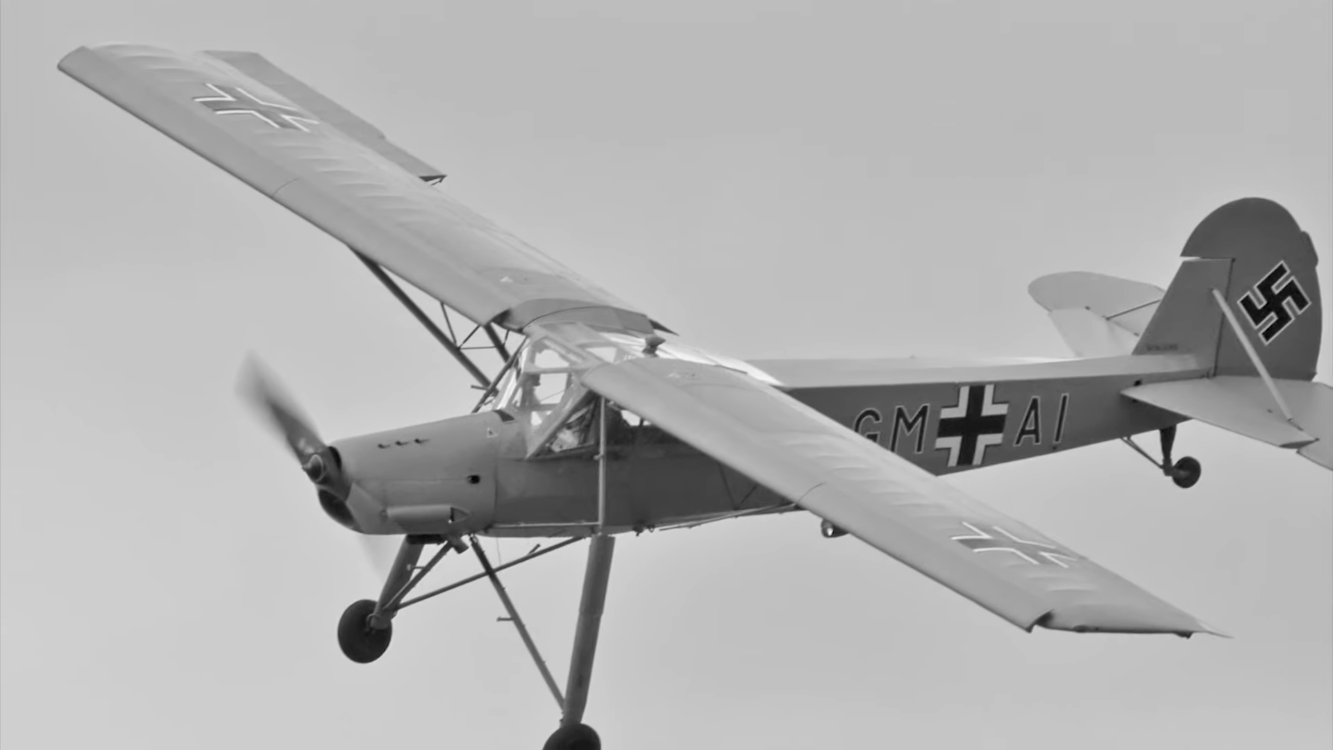
The plane’s wide, glassed-in cockpit gave its crew a nearly 360-degree view—perfect for artillery spotting or reconnaissance. Though powered by a modest 240-horsepower Argus engine, it could stay aloft at just 30 mph and touch down almost vertically.
The Eyes of the Wehrmacht
From 1937 to 1945, over 2,900 Fi 156s were produced in Germany, France, Romania, and even the Soviet Union. The Storch became the Luftwaffe’s go-to aircraft for reconnaissance, officer transport, medical evacuation, and artillery coordination. Rommel used his personal Storch in North Africa to command the Afrika Korps, while German generals relied on it to inspect front lines and direct troop movements.
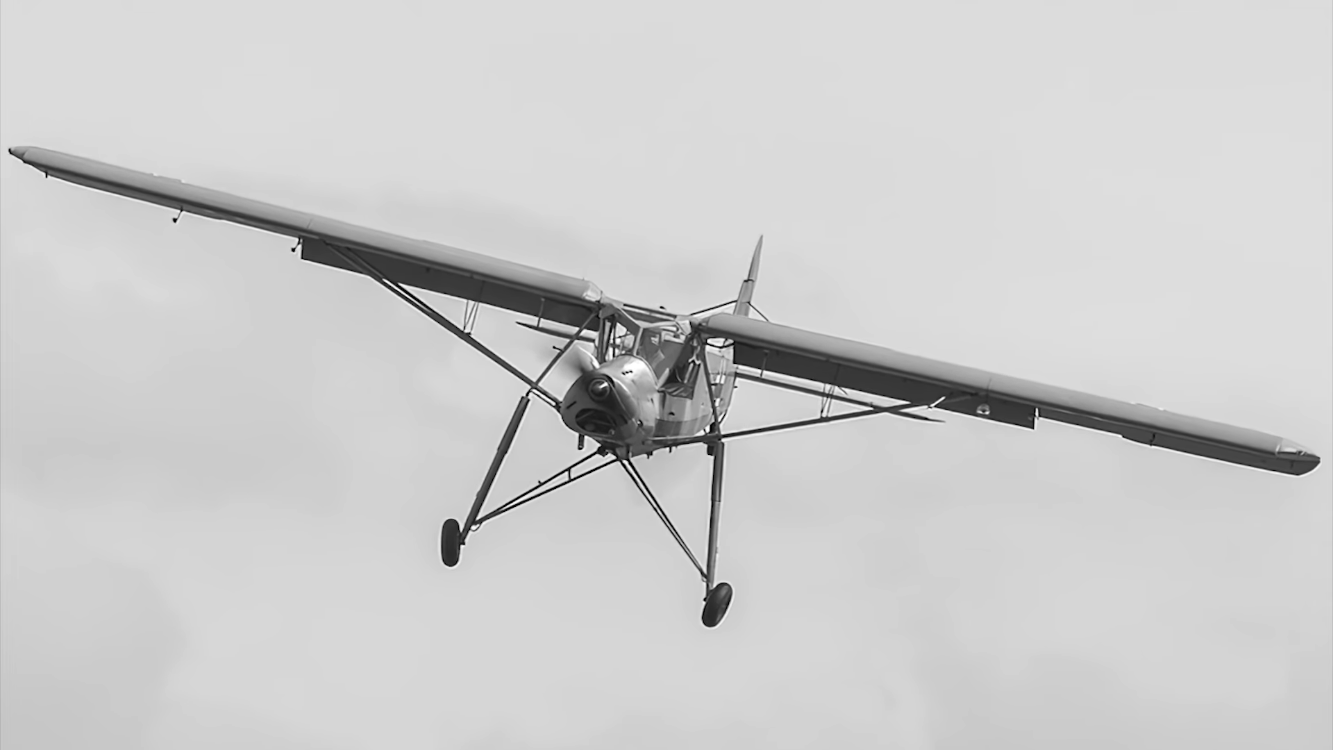
The Storch even participated in commando operations, landing small squads to seize bridges or strongholds—most famously during the 1943 rescue of Benito Mussolini.
A Daring Rescue That Made History
During Operation Eiche, SS officer Otto Skorzeny led a team to rescue the deposed Italian dictator from a mountain-top hotel in the Gran Sasso. Pilot Heinrich Gerlach managed to land his Storch on the rocky slope—barely 30 meters of space—and take off again with both Skorzeny and Mussolini aboard, while under fire. The overloaded aircraft somehow clawed its way into the sky, securing one of the war’s most daring escapes.
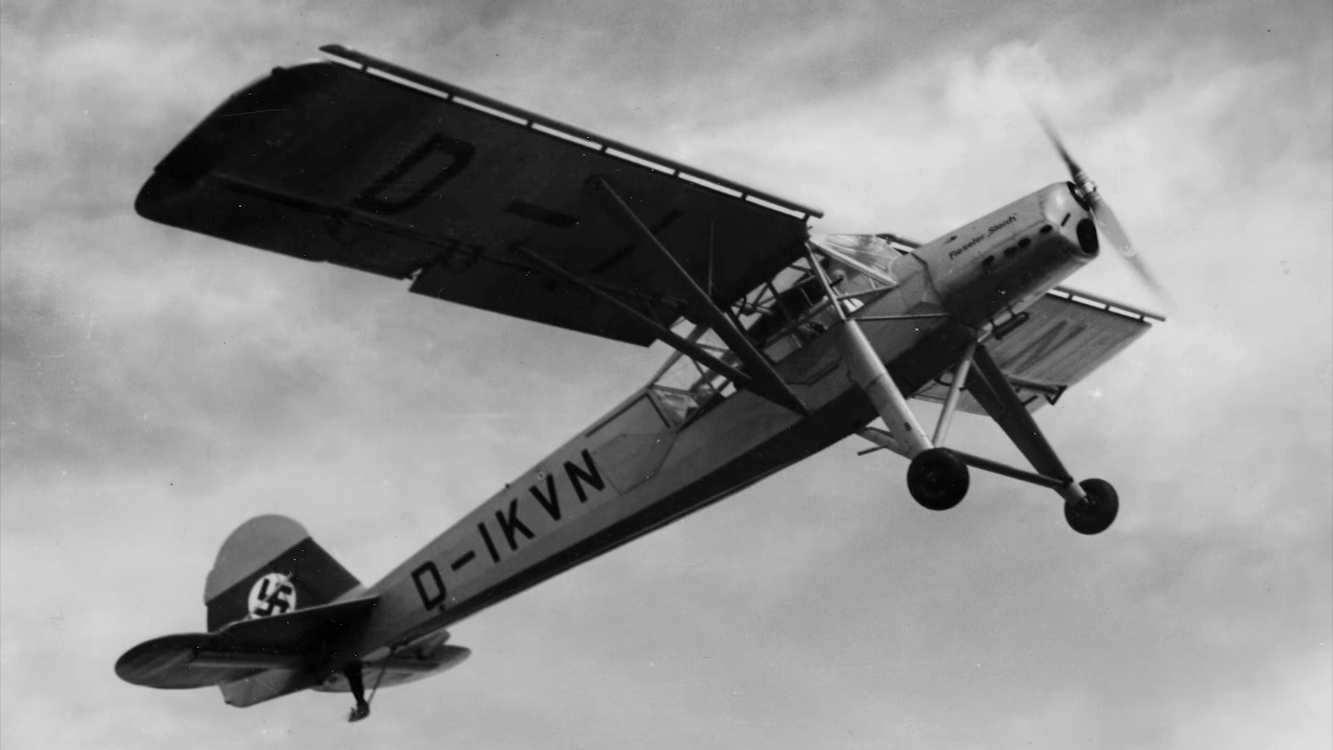
Even Winston Churchill couldn’t ignore the plane’s brilliance, using a captured Storch himself after D-Day to inspect Allied positions.
Legacy of a Legend
The Fi 156’s final wartime flight came in April 1945, when pilot Hanna Reitsch flew into Berlin to visit Hitler’s bunker. By then, the Storch had earned universal respect. Aviation historian Peter R. March later wrote, “The Fieseler Storch was by far the best liaison and spotter aircraft of World War II.”
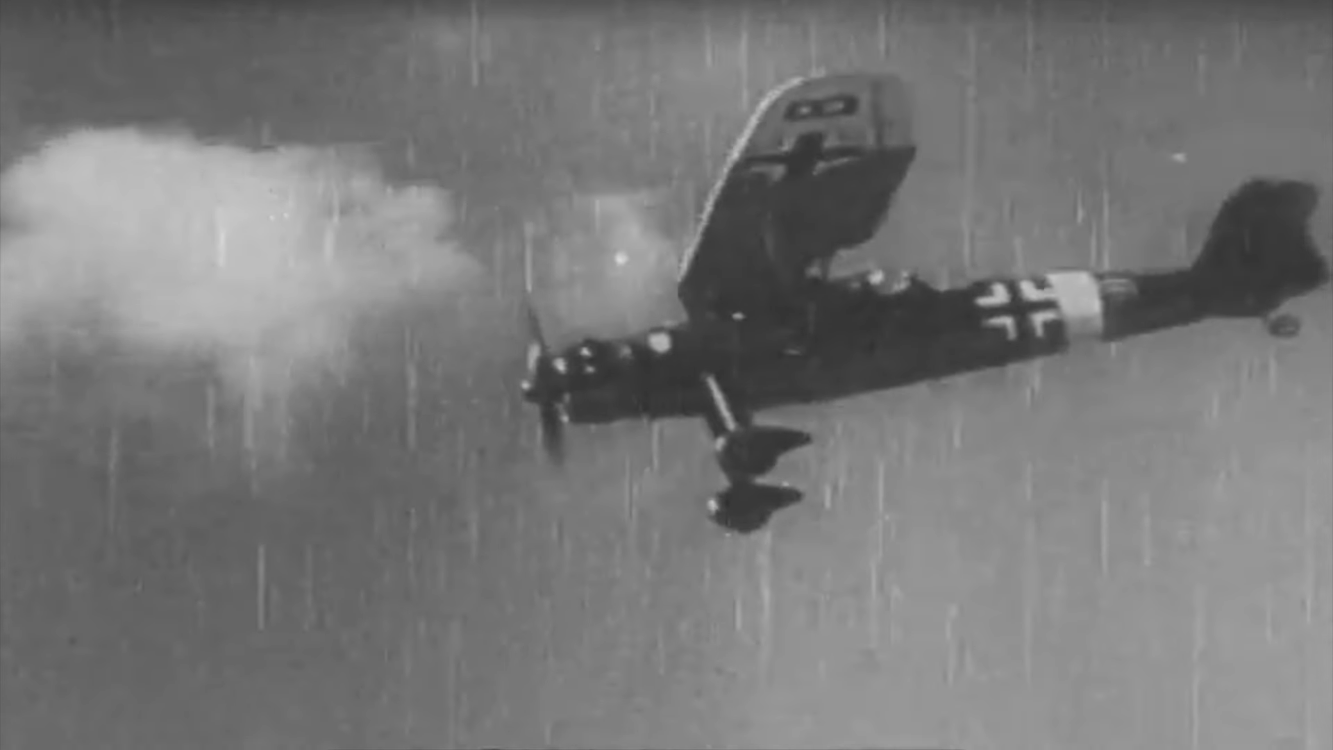
Simple, rugged, and capable of flying where others couldn’t, the Fi 156 defined an entire class of aircraft—and remains the standard by which all STOL planes are measured.














